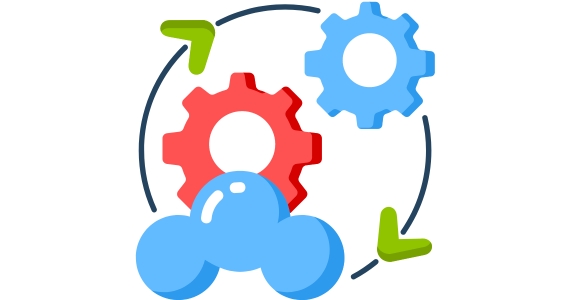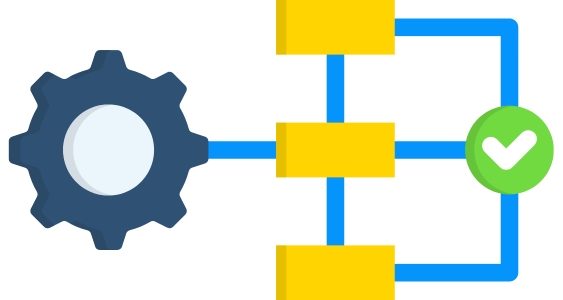With complex tasks, diverse teams, and ever-evolving priorities, project managers must coordinate these aspects to create a cohesive and harmonious work process. This is where workflow orchestration comes in.
Effective workflow orchestration is critical for seamless project management and productivity. It offers a structured approach to streamline operations and achieve seamless task management.
If you’re wondering how to master workflow orchestration, here’s a comprehensive guide:
Understanding Workflow Orchestration
Workflow orchestration is the conductor guiding a business process to completion. It entails coordinating and sequencing interconnected tasks to meet a specific goal.
Imagine an e-commerce company undergoing a digital transformation initiative. To fulfill customer orders efficiently, they need to orchestrate various tasks. This could involve assigning tasks to warehouse staff via a mobile app, integrating with automated packing systems, and utilizing AI-powered chatbots to provide customer support.
Smooth workflow orchestration ensures that these tasks occur in the correct order and timeframe, contributing to a more streamlined and optimized customer experience.
Key Components Of Effective Workflow Orchestration

To enable smooth workflow orchestration, you must consider vital steps for seamless task management. They include the following:
Process mapping
The foundation of effective workflow orchestration is process mapping. This involves visually depicting the sequential tasks that drive a business process from start to finish.
Thoroughly mapping out the workflow is crucial for fully understanding the constituent steps, task order and dependencies, required resources, and potential bottlenecks.
Integration
Modern workflows depend on multiple integrated digital systems. When tasks span disparate tools and platforms, seamless data exchange and connectivity are essential for smooth operations.
Without proper integration, information silos emerge, causing duplicative data entry, errors from manual transfers, and productivity lags from switching applications.
Communication
Clear communication and transparency are essential for aligning distributed teams and orchestrating cohesive workflows.
Without ongoing information exchange, team members operate in silos causing misalignments, duplications, and delays.
So, consider project management platforms with built-in communication to streamline collaboration.
Automation
Automating manual, repetitive tasks is critical to seamless task management. Technologies like Robotic Process Automation (RPA) can mimic human actions to complete data entry, updates, and reminders. This alleviates your team from mundane work so they can focus on strategic priorities.
Monitoring and adjusting
Ongoing monitoring and adjusting strategies are imperative for orchestrating agile workflows. Without tracking progress in real-time, you’ll discover inefficiencies when they’re challenging to remedy.

Project management tools with live dashboards enable you to monitor workflows immediately. Interactive Gantt charts display the status and sequencing of tasks, highlighting those falling behind.
You can generate real-time reports to view productivity benchmarks across individuals, teams, or projects.
Strategies For Mastering Workflow Orchestration
Achieving seamless workflow orchestration requires strategic direction for efficiency and seamless task management. Here are the strategies to consider:
Set clear objectives
Before orchestrating project workflows, clearly define measurable objectives for your organizational goals. Concrete objectives guide task logic and sequencing.
For example, a software project may target objectives to reduce app loading time by two seconds, decrease monthly server costs by USD 1,000, and improve user satisfaction scores by 10%.
With strategic aims set, workflow orchestration can then align granular tasks to drive toward these quantifiable targets in a streamlined, harmonized manner.
Define roles and responsibilities
Workflow team members must understand their parts to harmonize seamlessly. Clearly define each person’s responsibilities and deliverables to prevent duplication and ensure accountability.
Mapping roles to workflow stages helps team members see how their work fits into the broader performance.
Prioritize tasks
Prioritize tasks depending on their impact on the project’s objectives and deadlines. For instance, updating site architecture and content may take priority over visual refresh for a website redesign to enable a timely launch.
Securing the venue and inviting speakers might precede determining menu options for an event. Proper sequencing based on objectives ensures flawless task management.
Implement scalable solutions
Effective workflow orchestration requires scalable solutions. Your team should leverage standard tools, conventions, and platforms that translate across simple and complex works.
Also, standardized processes with interchangeable parts help foster agility. They establish integrations and modular automation scales without reengineering entire systems. With scalable foundations, workflow orchestration seamlessly adapts to support business operations.
Embrace continuous improvement
You must continuously improve workflow performance. Regularly collect feedback from teams executing the process. Analyze productivity metrics and monitor data to identify bottlenecks. Refine handoffs, adjust resource allocations, and streamline through automation.
Small tuning changes compound over time, allowing you to perform increasingly complex workflows with greater speed, quality, and harmony.
Overcoming Challenges In Workflow Orchestration
Although effective workflow orchestration has immense benefits, organizations can encounter challenges. Your team may resist altering existing workflows or learning new tools. Disparate legacy systems may lack integration capabilities.
Miscommunication and misalignment across teams can still occur. Navigating these hurdles requires thoughtful change management, technology flexibility, and continual optimization.

When rolling out workflow changes, clearly communicate objectives, provide thorough training, and highlight efficiencies to secure buy-in. Recognize that you may need iterates; be willing to adjust processes depending on user feedback. Start with small pilot groups to test and refine before the organization-wide launch.
Evaluate options like middleware, Application Programming Interface (APIs), or low-code platforms to integrate systems cost-effectively. Cloud computing may offer more seamless interoperability than on-premises applications. Also, prioritize automating repetitive manual tasks to build adoption.
Additionally, foster an agile, continuous improvement culture focused on optimizing workflows. Perform regular retrospectives to identify enhancements. Revisit process maps to refresh, realign, and provide ongoing training as workflows evolve.
Conclusion
Proficient workflow orchestration allows you to produce seamless performance, turning the potential discord of complex tasks into a symphonic achievement.
Implementing these practices enables you to transform disparate functions into a smooth, continuous progression from project inception to timely and successful delivery.
Work will flow efficiently through clearly defined stages. Teams will perform their roles harmoniously and complete projects to a high standard.
See Also: Elevating Business Success: The Unmatched Expertise Of Marketing Agencies










